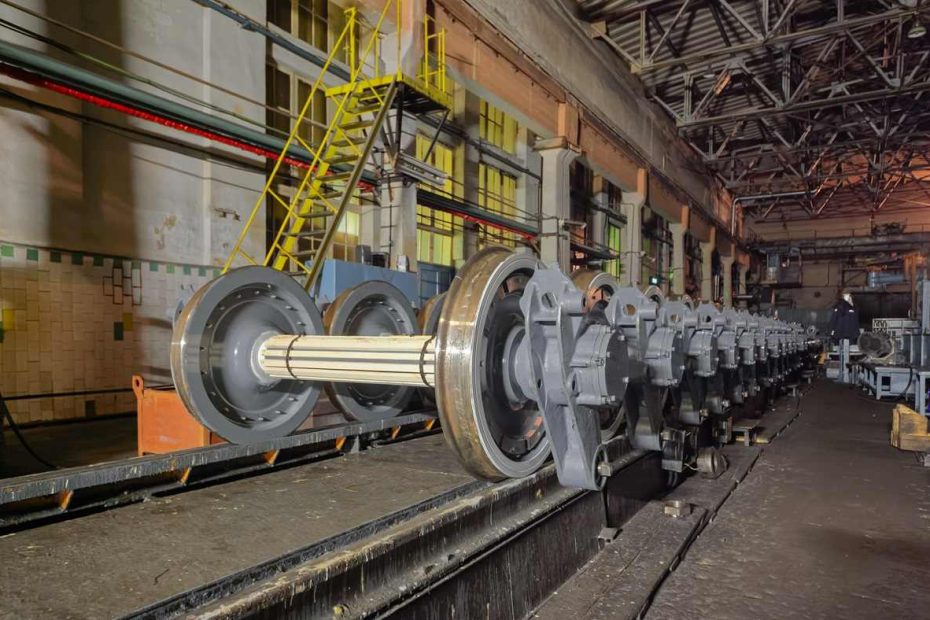Train brakes are one of the most important components of any railway vehicle. They ensure the safety of passengers and cargo by controlling the speed and stopping the train when necessary.
Brakes also reduce wear and tear on railroad tracks by reducing friction between wheels and rails.
A rail brake is a type of brake used on railcars to enable deceleration, control acceleration (lowering), or keep them stationary when parked.
While the basic principle is similar to that used in road vehicles, the operational characteristics are more complex due to the need to control multiple linked wagons and to be effective on vehicles left without a main engine.
The Types Of Brakes That Are Used In Trains
There are many different types of train brakes, and each one is designed to meet certain requirements depending on the type of train, its speed and other factors.
In general, there are two main types of braking systems that are used to stop trains:
1. Air brakes
2. Electro-pneumatic brakes
As the name suggests, air brakes use the force of air. Specifically, an air brake will use compressed air to apply pressure to the wheels when applied.
Electropneumatic brakes work differently. These types of brakes are electrically controlled and are usually more thorough than an air brake system.
Black handles include:
1. Automatic train brake.
2. Direct brake.
3. Parking brake.
4. Ferry brake.
5. Magnetic rail brake.
6. Electro-dynamic brake.
7. Electrodynamic rheostat brake.
8. Parking brake.
9. Regenerative brake.
Depending on the requirements of the train, combinations of these types of brakes can be used to achieve maximum efficiency and safety when stopping the train.
Types of brakes according to the manufacturer
Each type of train brake has its own characteristics, advantages and disadvantages that determine its suitability for a particular type of train or specific application.
That’s why there are quite a few train brake system manufacturers. Here I will mention some of them:
1. Knorr-Bremse
KNORR brakes are one of the most used types of train brakes in Europe. They were developed by the Knorr-Bremse company and are characterized by high efficiency and reliability.
This includes brakes for light and heavy trains, as well as special brakes for trains with certain functions. KNORR features vary by model, but generally include the ability to respond quickly and have great braking performance.
The advantage of KNORR is the wide variety of brakes, but its disadvantage is that it is relatively expensive.
2. Matrosov
Matrosov is another type of train brake that is made in Russia. It is suitable for use in large and heavy trains because it is very strong and efficient.
Its characteristics include the ability to withstand high and low temperatures and withstand heavy loads.
The advantage of Matrosov is its strength and efficiency, but its disadvantage is that it is very heavy and not so easy to assemble and disassemble.
3. Oerlikon
Oerlikon is a type of train brake that is relatively light and small. This makes it suitable for use in smaller trains.
Its features include good antifreeze protection and the possibility of installing a vacuum tank.
The advantage of Oerlikon is its lightness, which makes it easy to install and remove, but its disadvantage is that it cannot withstand heavy loads and is less effective than other types of brakes.
4. DAKO
DAKO is another type of train brake which is suitable for light and medium heavy trains.
DAKO features include the ability to automatically adjust braking force as well as braking efficiency.
DAKO’s advantage is an economical and efficient brake that offers a wide variety of models for different needs. Its disadvantage is that it is not as strong and effective as other types of brakes for heavier trains.
5. WABCO-WESTINGHOUSE
WABCO-WESTINGHOUSE brakes were created by two American companies, WABCO and Westinghouse.
It is a brand of train brakes that combines innovative technology and great braking efficiency.
WABCO-WESTINGHOUSE features include the ability to automatically adjust braking force and quick response.
The advantage of WABCO-WESTINGHOUSE is its efficiency and innovative technology, but its disadvantage is that it can be expensive to purchase and difficult to install.
6. Charmilles
Charmilles is a train brake brand that is known for its strength and braking performance.
The characteristics of Charmilles include the ability to react quickly and good protection against harmful effects.
The advantage of Charmilles is its strength and efficiency, but its disadvantage is that it can be heavier and more difficult to assemble and disassemble.
7. HARDY
HARDY is another type of train brake that is suitable for use on large and heavy trains.
HARDY features include the ability to adjust braking force and great braking efficiency.
The advantage of HARDY is its efficiency and strength, but its disadvantage is that it can be expensive to purchase.
Each type of train brake has its own characteristics, advantages and disadvantages that determine its suitability for a particular type of train or specific application.
Therefore, it is important to choose the right type of brake to meet the needs and requirements of the application.
Read more about vebeo fittings.
